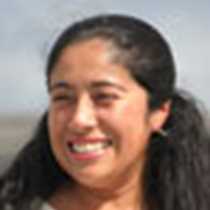Today we woke up at Academy bay, located on the southern part of Santa Cruz Island. It was a bit of a shock to see that there were several ships around us, water taxis, you could spot houses, buildings, people—back to civilization! The island hosts the largest human population nowadays—about 20,000 inhabitants. The town of Puerto Ayora is the center of the economic activity of the archipelago; tourism plays a big role in keeping the town and its people very busy.
The first visit of the morning was to the Fausto Llerena Giant Tortoise Breeding Center, run by the Galapagos National Park together with the famous Charles Darwin Research Station. Here, our guests learned about the importance of restoration programs for endangered species, and the hard work that went into saving the emblematic giant tortoises, as well as their unique ecosystems.
Afterwards there was time for shopping, exploring the fish market and the little cafes, and getting a glimpse of the life of the local residents. Using the benefits of civilization, the guests of the National Geographic Endeavour enjoyed a diversity of activities: mountain biking, visiting a local school, and an unforgettable experience at a private farm known as “el Trapiche”. Here, our young explorers tried a local banana, enjoyed a donkey ride, which operates the press that serves as a method of obtaining sugar cane juice, and learned how brown sugar and coffee is obtained. This was a great way to understand the unique interaction between humans and nature.
Lunch was in the highlands, at Aquelarre Restaurant, a quiet place with a great garden and delicious food. The habitat in the highlands is perfect for land birds, such as the Darwin finches, and also hosts a diversity of plants, as well as the giant tortoises. Big males were seen around the area—it is an amazing experience to walk among these giants!
The visit to my home island showed our guests the meaning of conservation and tourism; only here they can understand that we all play an important role in the future of this unique archipelago. What we do today, will affect the islands tomorrow. It is a great joy to guide in the natural laboratory of the world; as one of our young explorers stated: “going to the Galapagos is like going to heaven!”







